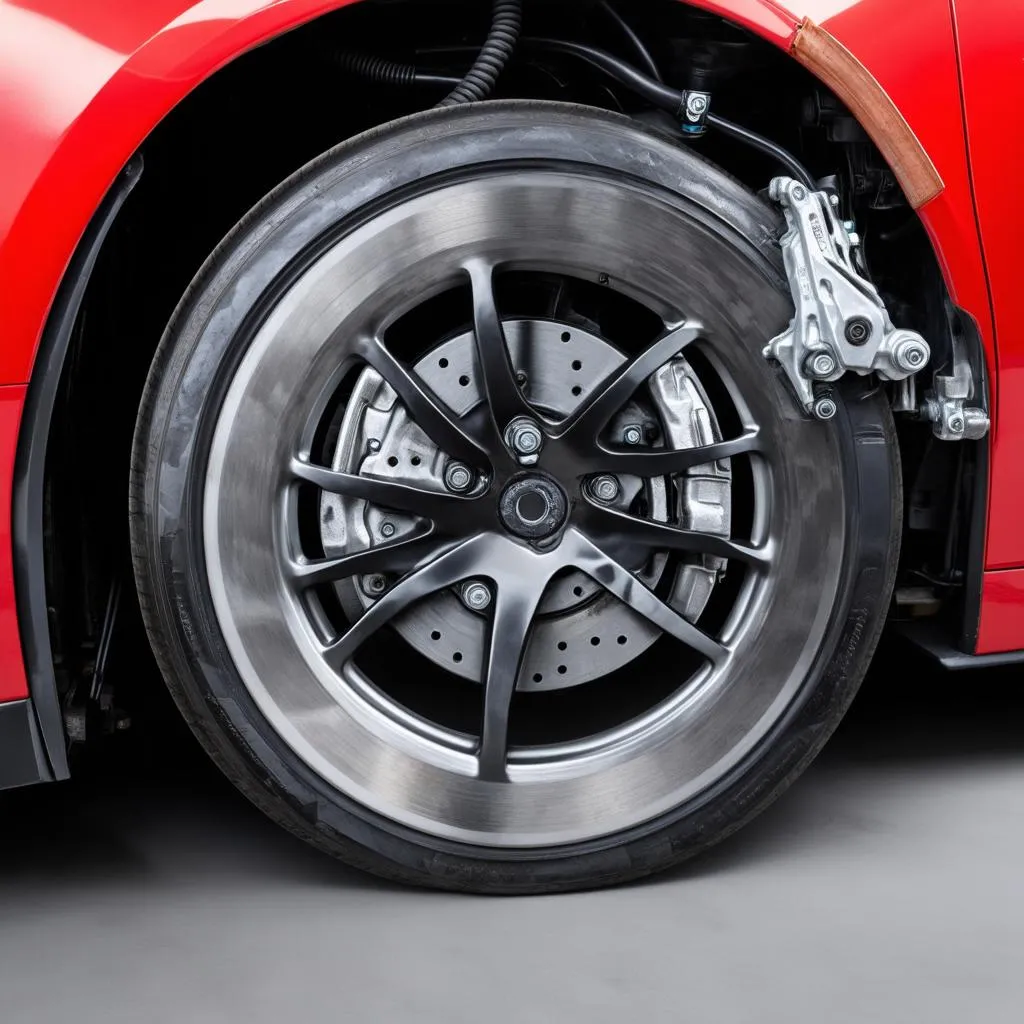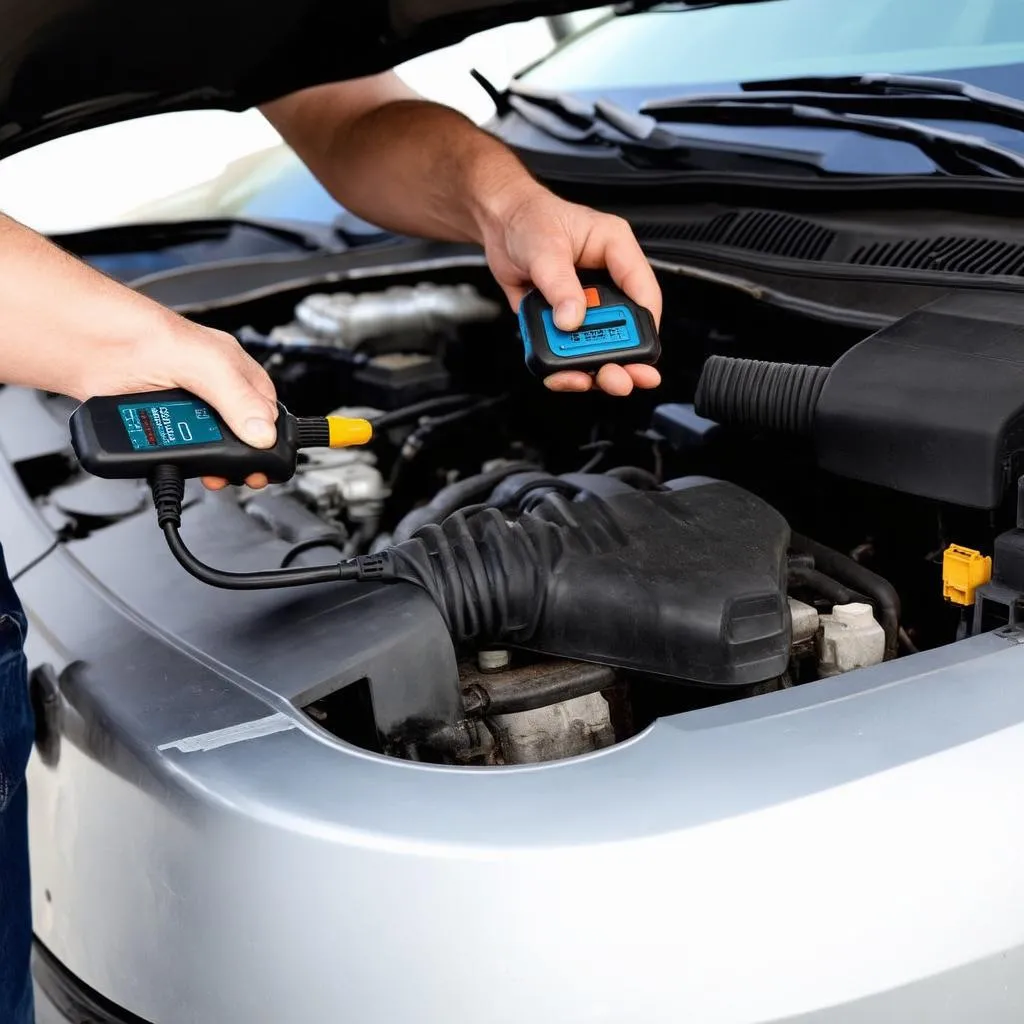Imagine this: You’re driving down the road, enjoying the scenery, when suddenly, your car’s check engine light pops on. You pull over, heart racing, wondering what could be wrong. You grab your trusty OBD-II scanner, plug it in, and up pops the cryptic code: CO223. Now what?
Don’t panic! At techcarusa.com, we’re here to help you decode the mysteries of your car’s electrical system. In this article, we’ll demystify the CO223 OBD code, explore its potential causes, and guide you on how to address it.
What Does a CO223 OBD Code Mean?
In simple terms, a CO223 OBD code usually points to an issue with your car’s Electronic Brake Force Distribution (EBD) system. This system is a crucial safety feature that optimizes braking force to each wheel, preventing wheel lock-up and improving stability during braking.
Think of it like this: You wouldn’t want all your braking power focused on one wheel when you slam on the brakes, right? That’s where the EBD system steps in, acting as a conductor ensuring harmony in your braking system.
Unraveling the CO223 Code: Possible Causes
While the CO223 code specifically points to a general fault within the EBD system, several culprits could be causing it:
-
Faulty Wheel Speed Sensor: These sensors, often positioned near each wheel, constantly monitor wheel speed. If one of these sensors malfunctions or sends incorrect data, it can trigger the CO223 code.
-
Damaged Wiring or Connectors: The EBD system relies on a network of wires and connectors to communicate with various components. Over time, these wires can become frayed, corroded, or damaged, disrupting the flow of information and triggering the code.
-
Defective EBD Control Module: In some cases, the issue might lie within the EBD control module itself. This module is the brain of the EBD system, and a malfunction can lead to various problems, including the CO223 code.
-
Hydraulic Issues: While less common, problems within the hydraulic system, such as low brake fluid levels or a malfunctioning brake master cylinder, can also impact the EBD system and trigger the code.
Troubleshooting and Solutions
Now that we understand the potential causes, let’s delve into how to address a CO223 code:
-
Visual Inspection: Start with a visual inspection of your car’s braking system. Check for any visible damage to wires, connectors, or brake lines. Look for signs of fluid leaks around the wheels and the master cylinder.
-
Professional Diagnostics: If a visual inspection doesn’t reveal the culprit, it’s best to consult a qualified mechanic specializing in automotive diagnostics. They can use advanced scan tools to pinpoint the source of the problem.
-
Component Replacement: Depending on the diagnosis, the solution might involve replacing faulty components such as wheel speed sensors, wiring harnesses, or even the EBD control module.
-
Fluid Check and Top-up: If the issue lies with low brake fluid levels, topping up the fluid might suffice. However, it’s essential to investigate why the fluid level was low in the first place, as it could indicate a leak.
-
System Reset: After addressing the root cause, a system reset might be necessary to clear the CO223 code and ensure everything is functioning correctly.
Frequently Asked Questions about CO223 Codes
Q: Can I still drive my car with a CO223 code?
A: While it might be possible to drive for a short distance, it’s not recommended. A malfunctioning EBD system can compromise your car’s braking performance, putting you and others at risk.
Q: How expensive is it to fix a CO223 code?
A: The repair cost depends on the underlying cause. A simple fix like a damaged wire could cost under $100, while replacing the EBD control module might set you back several hundred dollars.
Q: Can I prevent CO223 codes in the future?
A: Regular car maintenance, including brake inspections and fluid flushes, can help prevent issues that might trigger CO223 codes.
 car brake system
car brake system
The Importance of Prompt Action
As with any car issue, especially one involving the braking system, prompt action is crucial. Ignoring a CO223 code or delaying repairs can lead to more severe problems and costly repairs down the line.
Beyond CO223: Exploring Related Codes
The CO223 code is just one piece of the puzzle when it comes to your car’s electronic braking system. Other related codes might include:
- C0226: Left Front Wheel Speed Sensor Circuit Range/Performance
- C0227: Left Rear Wheel Speed Sensor Circuit Range/Performance
- C0228: Right Front Wheel Speed Sensor Circuit Range/Performance
- C0229: Right Rear Wheel Speed Sensor Circuit Range/Performance
Your Car’s Health: A Holistic Approach
Remember, your car’s electrical and braking systems are interconnected. Issues in one area can impact others. Just as a healthy body requires balance, so does a well-maintained car.
 car diagnostic scanner
car diagnostic scanner
Need Help? We’re Just a Message Away!
Feeling overwhelmed? Don’t worry! We understand that car troubles can be stressful. If you’re struggling with a CO223 code or any other car-related issue, our team of automotive experts is here to help. Contact us via Whatsapp at +84767531508 for 24/7 support. We’re passionate about keeping you safe on the road!
Keep Exploring:
Interested in learning more about car maintenance, diagnostics, and repairs? Explore our other informative articles on techcarusa.com:
- Understanding Your Car’s Electrical System: A Beginner’s Guide
- Common OBD-II Codes and Their Meanings
- DIY Car Maintenance Tips to Save You Money
Remember, knowledge is power when it comes to car care. Stay informed, stay safe, and happy driving!